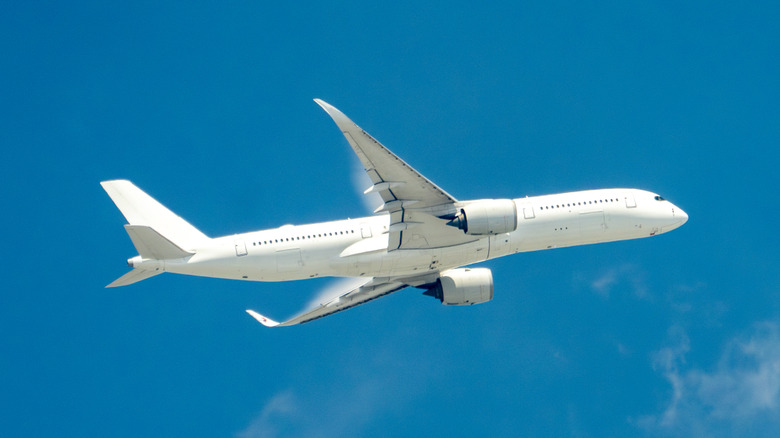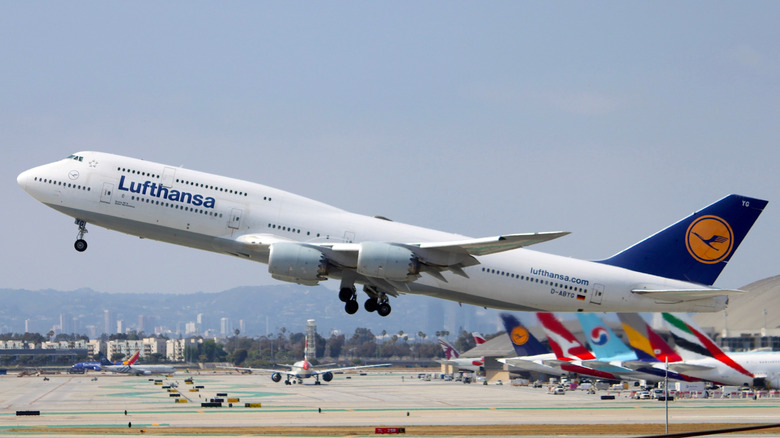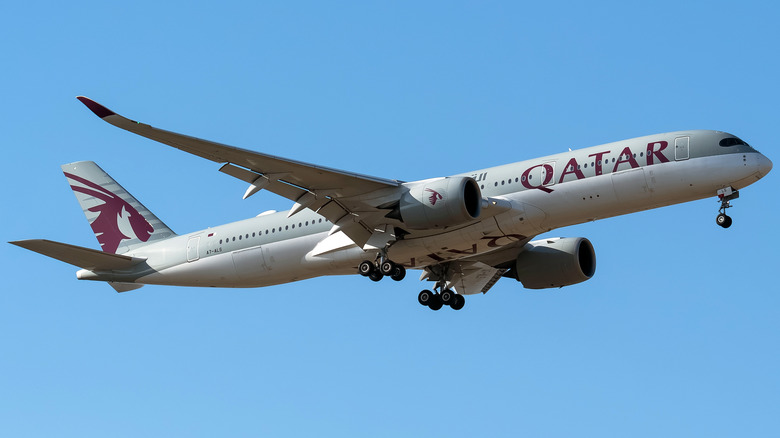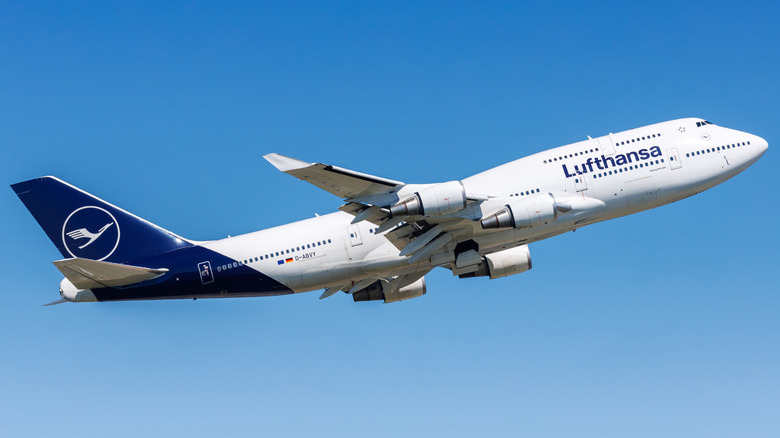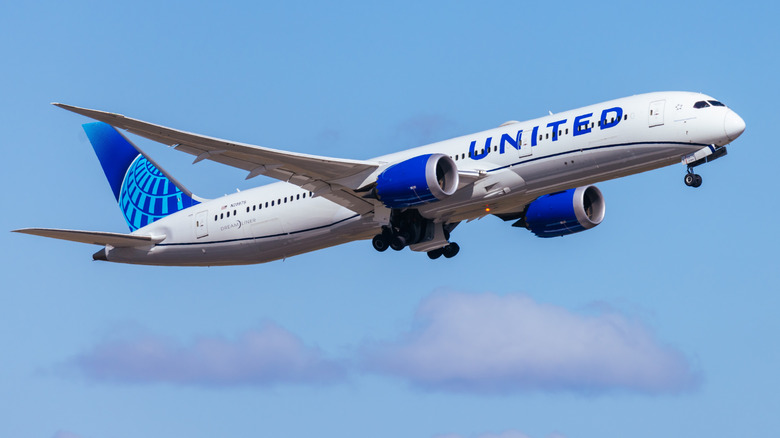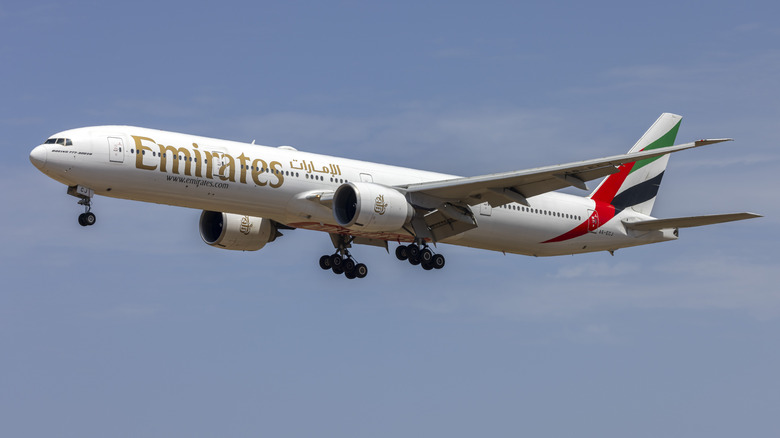The 5 Fastest Passenger Airliners That Fly Today, Ranked By Top Speed
Commercial aviation has come a long way since the Wright brothers first lifted off at a speed of just 34 mph. What began as a fragile experiment in a controlled flight environment has grown into an industry powered by cutting-edge engineering and continuous innovation. In the 1930s, aircraft like the Douglas DC-3 revolutionized passenger travel with cruising speeds up to 237 mph, which were unimaginable at the time. Today, that number looks underwhelming. Modern wide-body airliners regularly fly at triple that speed, pushing boundaries just shy of the speed of sound.
It's worth noting that passenger airliners can differ from passenger jets. Airliners are designed with features like higher fuel efficiency and seating capacity, whereas the latter include ultra-fast, low-capacity craft. Some of the fastest passenger jets, like the Bombardier Global 7500, can come within a whisker of the speed of sound, but these tend to be business jets, rather than passenger airliners.
With advancements in aviation engineering, airliners are now achieving impressive top speeds while still balancing range, fuel economy, and passenger comfort. As we look ahead, innovation continues to push the envelope. Concepts for next-generation supersonic and even hypersonic passenger planes are in the works, promising to shrink international flight times dramatically. But for now, the fastest airliners in the sky remain a testament to just how far and how fast commercial aviation has come. Here's a look at some of the top performers.
Boeing 747-8i
The Boeing 747-8i stands as the fastest commercial airliner currently in service, cruising at a top speed of 706 miles per hour. First introduced in 2011, the 747-8i stretches over 250 feet in length, making it not only the fastest but also the longest passenger aircraft ever built. It can cover up to 7,370 nautical miles, which is more than enough to connect places like London to Singapore non-stop.
The 747-8i features four General Electric GEnx-2B67 engines. The airliner benefits from improved fuel efficiency, reduced noise emissions, and a redesigned wing structure with raked wingtips that enhance lift and aerodynamic performance at high speeds. With seating for around 410 passengers in a typical three-class layout, it offers ample capacity for long-haul travel. Each unit is priced around $418 million, though final costs vary based on configuration and custom airline specifications. While its predecessor, the 747-400, helped pioneer global air travel in the late 20th century, the 8i represents Boeing's latest chapter in quad-jet commercial design.
Although it comes pretty close, the Boeing 747-8i was never designed to break the sound barrier. This is because when a plane nears or exceeds the speed of sound, shockwaves form around it, resulting in turbulence. Supersonic flight also consumes significantly more fuel, making it costlier than subsonic travel. Despite a shift toward smaller, more fuel-efficient twin-jets in the industry, the 747-8i still holds its own on key long-range routes for carriers like Lufthansa and Korean Air.
Airbus A350
The Airbus A350 is a modern long-haul aircraft that blends fuel efficiency with extended range, speed, and comfort, making it a favorite among global carriers. The A350 comes in two main variants: the A350-900 and the A350-1000. Both these variants can reach a top speed of 683 mph. The 900 version, first introduced in 2015, typically seats between 300 and 350 passengers in a three-class layout and boasts a maximum range of approximately 8,500 nautical miles.
The more spacious A350-1000, introduced later, accommodates up to 410 passengers and extends the range to 8,900 nautical miles. It's currently the longest-range airliner in service outside of specialized ultra-long-range variants like the A350-900ULR, which pushes the range further to an astounding 9,700 nautical miles, enough to connect nearly any two cities on Earth without refueling. That's why it's used on record-breaking non-stop flights, such as Singapore to New York.
Both variants are powered by Rolls-Royce Trent XWB engines, among the most efficient large aero engines in operation today. These engines contribute to the A350's reduced fuel burn and lower emissions, making it one of the most eco-conscious widebody jets available.
In terms of cost, market values for the A350-900 typically fall between $84 million and $167 million, while the A350-1000 ranges from about $111 million to $182 million, depending on the configuration, age, and lease structure. These aircraft are widely adopted by major carriers like Qatar Airways, Singapore Airlines, and British Airways.
Boeing 747-400
Showcasing high speed, endurance, and ample capacity, the Boeing 747-400 is one of the most successful widebody designs of all time. First flown in 1988, the 747-400 was a notable upgrade from earlier models, introducing winglets for better fuel economy, a fully digital two-crew flight deck, and a more spacious interior. Its top speed is 656 mph, making it one of the fastest commercial airliners.
In a typical three-class layout, the 747-400 carries up to 416 passengers, though high-density configurations can push this number closer to 660. With a maximum range of approximately 7,670 nautical miles, it can serve major long-haul routes like London to Hong Kong and New York to Tokyo with ease. Despite being a four-engine aircraft, a design less favored today for fuel economy, its powerful engines from General Electric, Pratt & Whitney, or Rolls-Royce kept it competitive in terms of performance.
While production ended in the mid-2000s, the 747-400 continues to serve either in cargo service or with passenger airlines in secondary markets. Notably, Lufthansa maintains a fleet of eight passenger-configured 747-400s, primarily operating out of Frankfurt. Depending on age and condition, used 747-400s now trade for a fraction of their original list price (as low as $5.6 million!). These once used to cost over $230 million. Still, their enduring legacy lies in having helped shape international air travel as we know it today.
Boeing 787 Dreamliner
First introduced in 2011, the Boeing 787 Dreamliner is designed with fuel efficiency and long-haul flexibility in mind. The Dreamliner combines speed with the kind of range that can redefine route planning for airlines. Its top speed of 652 mph may not break records, but it's fast enough to support ultra-long-distance travel.
Depending on the variant, the 787 offers a range between 6,330 and 7,565 nautical miles. The 787-9, for example, can fly nearly 7,600 nm nonstop, linking cities like London to Santiago or Tokyo to Boston without the need for refueling. Much of this is thanks to its advanced lightweight composite materials and next-generation engines, the GEnx-1B or Rolls-Royce Trent 1000, which deliver strong thrust while consuming less fuel compared to previous generations.
Today, the 787 is in widespread global use, with more than 1900 delivered and hundreds more currently being produced. Major operators include United Airlines, ANA, British Airways, and Qatar Airways. In terms of price, recent market evaluations place the Dreamliner between $53 million and $175 million, depending on age and variant.
Boeing 777
This cornerstone of international aviation was first introduced in 1995. It was primarily designed for range, capacity, and fuel efficiency and is still widely used by leading airlines on intercontinental routes. The most common variant seen in service, the 777-300ER, is capable of seating up to 396 passengers in a typical two-class layout and traveling over 7370 nautical miles without refueling, making it ideal for long-haul flights like from Paris to Singapore.
Powered by the record-setting GE90-115B engines, the 777 reaches a top cruising speed of 645 mph. Each engine generates over 115,000 pounds of thrust, allowing the 777 to maintain its high speeds despite carrying substantial passenger and cargo loads.
A new 777-300ER has an astounding list price of $375.5 million, but since airlines usually get hefty discounts of over 50%, the market value of a used aircraft is around $26 to $90 million, depending on age, specifications, and demand. Despite newer models entering the scene, the 777 continues to fly for airlines such as Emirates, Qatar Airways, United Airlines, and British Airways, often responsible for their longest or most premium routes.
